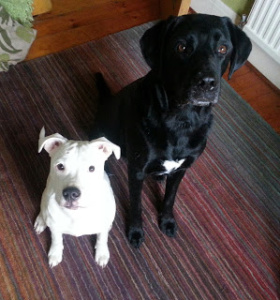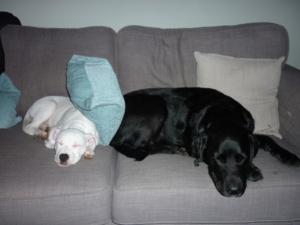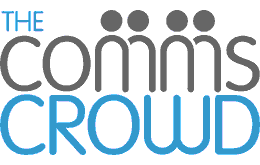What makes a standout PR candidate?
Time to read: 1 minute
Sam Howard survives another year of crash-course interviews and passes on her observations for what makes a standout PR candidate.
In addition to tending the Comms Crowd, I have an enjoyable side hustle working as associate lecturer leading the Professional Employability module for Westminster Uni. Recently we conducted externally-invigilated panel interviews with every student for a hypothetical intern or junior role depending on their experience in PR, advertising, marketing events etc. There were two panels each panel interviewed 30 students in a day – intense. So you get a very succinct view of qualities that work in interview: Here were the ones that worked best for me:
IMMERSED – Those that could clearly demonstrate a calling for the industry, enjoyed discussing campaigns and liked watching how stories played out in the media. These candidates were able to demonstrate a very proactive choice of careers, almost a vocation and we loved talking to these guys, they were one of us already.
ENGAGED – Those that liked engaging with us were open and seemed to enjoy the process, This really stands you in good stead when so many candidates seem reluctant to even be in the room and the interviewer feels more like a dentist trying desperately to extract information, than a would be employer, .
TUNED IN – Finally those that demonstrated a (quiet) resolve, an innate understanding they had this one moment to convince us that they had the attitude, the attributes, the experience and skills to easily fit in a team and capably do a good job. Those that were successful substantiated passion with knowledge, balanced confidence with credibility, openness with professionalism and demonstrated a positive rationale.They did not get distracted by their nerves, let the occasion overwhelm them, nor lose their way in an effort to become our NBFs, but just resolved to take that opportunity to show us the best of themselves with every answer. In short they had FOCUS.
But if these are not key qualities for you the great comfort of course is most all PR firms don’t rely on interview alone and applicants are given the opportunity to match the talk with the walk, demonstrating their skills and abilities in a variety of tests from proof-reading, pitching, aptitude tests, copy writing etc – and then it of course becomes a very level playing field. Hurrah!
Why the PR Industry is increasingly turning to freelancers
Sharing this recent article from PR Moment to which I also contributed, Ref Brexit, can’t speak for the rest of the industry but my crew of freelancers have never been busier. In an uncertain market, you need to make sure your PR budget is is invested in PR talent, not a nice reception area.
The PR industry is more dependent on freelancers than ever
Plunge into freelancing it refreshes your soul…
Time to read: 2 minutes
From newest member of the team, digital marketing diva – Simona Cotta Ramusino

Reality has finally hit. I have updated my LinkedIn profile with my new job title so it must be true: I am a PR And Digital Marketing Freelancer.
After 20 years of working for top class agencies and in-house marketing departments of international brands I have decided to take the plunge into freelancing. Making the decision to go freelance was a scary moment and I am just beginning to get to grips with my new status. It is something that, in just a short period of time, I have already come to appreciate and enjoy and won’t change my mind any time soon. Why? Well you need to know how I got into freelancing.
It’s really thanks to Sam.
Sam and I worked together a few years ago, and one of her talents back then was the ability to read people’s strengths and personalities and make it work well within a team. When I asked Sam for advice on whether I should join her band of freelancers she knew my type well: I am not a risk taker, I am someone who always has to think things through, always needs to have a Plan B (or C or D). So Sam not only laid out the naked truth about the freelance world but she also made sure I didn’t have too much time to think over the cons the new path would entail and got me straight to work as part of the Comms Crowd gang.
The “plunge” came with an important life lesson. As I started reconnecting and talking to previous colleagues, they all agreed it was a great career move for me, some even wondered why I hadn’t done this sooner. It surprised me. They knew more about me, about my skills and talent than I did. At the end it was their support and comments that gave me that final push and made me realise it was indeed a career change, it wasn’t something temporary, something I could do in my spare time or just as I was looking for something else. It was my new job title.
To answer my initial question on why I wouldn’t change being a freelancer this is because it lets me use all the communications skills I have learned through the years and apply them for a variety of clients that an agency wouldn’t even have on their books. I also feel it has elevated me professionally and it is giving me so much satisfaction, both professionally and personally. Because the relationships I establish with my clients seem to be more on a par, the recognition I receive for my work feels more personal and genuine.
So while some people may decide to go down the freelance route because they want a better work/life balance or be their own boss, for me these are just by-products. Freelancing means doing what you do best and enjoying it!
The Comms Crowd goes global!
Time to read: 1 minute
Sam Howard On how we are growing (albeit vicariously).

areas where we can provide on the ground support
When you go freelance, you quickly realise the limitations of what you can competently do and therefore the nature of the projects you can take on. So then, if you’re smart, you collaborate playing to your strengths working with others similarly smart but with complementary skills. Here at the Comms Crowd we have been sublimely happy in that phase for the last few years – steadily adding interesting clients that appreciate the hands on approach and building up the merits of the crew in a wholly organic stylee, even getting nominated for an award along the way. But what does our next iteration look like?
When I founded Comms Crowd it was not to become the next Edelman or even to get into the PR Top 100. In my experience bigger does not correlate to better – not for the clients, where more can buy you less; not for the staff, unless your job satisfaction depends on the length of your job title; nor even the bottom line, impressive offices and charismatic receptionist do not come cheap.
For me, small is truly beautiful and that’s the way we are going to stay. But that said who can deny the global nature of comms and the tech start-ups we work with, have global appeal and we need to secure them global attention without busting the budget…
So we have joined as a founding partner, globla network, The First PR Alliance courtesy of Swyft Communications in the US – a great fit for us and our clients as all the agencies focus on tech and start-ups so little will get lost in translatio. All the partner agencies are boutique independents like ourselves so we know all the work will be done by senior, accountable and personable teams and the buck stops with the founder,
 Between us we can provide PR support from Peru to Poland, Singapore to Sweden, United Kingdom to the United States and stopping off in Belgium, Columbia, France, Germany, Italy,The Netherlands, Morrocco, Portugal, Spain along the way.
Between us we can provide PR support from Peru to Poland, Singapore to Sweden, United Kingdom to the United States and stopping off in Belgium, Columbia, France, Germany, Italy,The Netherlands, Morrocco, Portugal, Spain along the way.
In tech comms at least, you don’t need to be big to be clever… just clever.
The fifth year – growing pains
Time to read: 1 minute
Sam Howard reflects on five years of being freelance…

elli aged 11
A lot can happen in five years. Five years ago my 11 year old little cutey baked cakes and gave freely of his cuddles and enthusiasm. Five years on and my ‘little’ cutey looks down on me in disdain while raiding the fridge and giving freely of his criticism. He loves me really – it’s just a phase right?
And so too has the business side grown up. As a team we have really found our niche now – tech startups, the way we work combined with our business model make us a great fit for the nimble and ambitious startup. None of us have the appetite for long meetings or long emails – we all just want to get stuff done!
Most recently our client work was short-listed for a PRmoment award, for a PR campaign we ran in the public sector. And I confess it feels good to be ranked up there alongside the more established agencies.

It’s gone from being just me to a tight little collective of PR Pros, our AR guy, a designer or two and a trio of copywriters, working together and playing to our strengths. And it’s grown bigger in all the right ways, while holding onto the core freelance premise, which is no premises at all!
Proud to say CommsCrowd HQ is still my former dining room and therefore we still have no need for a receptionist, an IT team, an office manager, an HR team or an accounts department. Just outlook, dropbox, google docs, and some wicked spreadsheets (a personal forte).
In addition to the bulking up of expertise, the other fantastic side of forming the freelance collective is that it offers the opportunity for each of us to develop outside of the world of comms. Whether it’s renovating a 300 year old cottage, bagging munros or learning to surf.
I’ve really got into the talent development element of PR and I’m now an associate lecturer for Westminster University and The London College of Communication. College days are the best days, I get an enormous amount of satisfaction nurturing the next generation of young ones and helping them prepare for the world of work.

elli coming up for 16
And when you feel supported by a brilliant team; when you genuinely warm to your clients and get a kick out of every campaign that delivers; when your pockets are over flowing with psychic income and you’re still learning and still evolving – well then there’s no reason to stop. Here’s to the next five years!
Tips for PR Internship Interviews
Time to read: 2 minutes
Sam Howard interviewed 40 PR undergrads in a day, here’s her top tips for standing out from the crowd.

pick me! oh please pick me!
This is what got me, it’s not until you interview 40 potential interns back to back do you realise how important it is to make a mark and stand out, for the right reasons.
Below my top ten tips for delivering a compelling interview:
1) Dress up not down. You’re a student, I know what students look like, show me what you look like as a young professional, help me imagine you in my world. Lads put on a suit, girls tie back the hair, easy on the make-up, everybody make sure the shoes compliment the look and are clean, Oh and take your coat off!
2) Bring in a portfolio and refer to it. Clips, references, college work, certificates etc.
3) Don’t be worried about nerves. We expect you to be nervous and can see through them, just focus on coherent answers that stack up.
4) Be able to answer the question ‘what do we get if we hire you?’ In three words that are true to the core of you. Even if you’re not asked it, have a handle on your personal brand, what it is, what you stand for.
5) If you are studying PR be able to talk about the industry, our issues, our successes, where we are heading, your PR super hero etc.
6) Don’t offer up a single adjective unless you have a story that backs it up. Don’t feel obliged to provide us with skills or qualities that you are unlikely to have at this early stage of your career. If we’re looking for a new CEO we would have advertised for one.
7) Be comfortable with your more humble achievements. The most convincing candidates were those that talked about everyday PR duties, how tricky it was to get coverage when there was no news, to create 10 tweets a day for a fish and chip shop, to get journalists to talk to you – at least that way we know you know what you are letting yourself in for.
8) Don’t be too eager to please, ‘I don’t care where I work who I work for what I do’ isn’t actually that compelling. Moderate your desire to learn with a view of where you’d like to end up.
9) The ability to demonstrate you can own and learn from mistakes is a key character strength not weakness. Be able to be reflective, think about things that have not gone well that were actually down to you not someone else. Why was that, and what did you learn from it?
10) Have a story lined up that lets us see the passion in you the one that lights you up! It doesn’t have to be work related, just something where we can see your natural energy and pride. Good luck, and enjoy the experience!
Why engage with Industry Analysts?
Time to read: 2 minutes
Courtesy of Eria Odhuba, a founder member of the team and our resident analyst relations guru – is it about what you know or who you know?
 When engaging with industry analysts, tech vendors and end users ALWAYS want to know what value they add and whether they can actually provide guidance to help them make crucial strategic decisions.
When engaging with industry analysts, tech vendors and end users ALWAYS want to know what value they add and whether they can actually provide guidance to help them make crucial strategic decisions.
For some people, the fundamental reason they engage with analysts is to get advice about how to position themselves better (vendors) or which vendor technologies to consider (end users) because they genuinely can’t do so themselves and feel that analysts know more about certain aspects of the industry than they do.
When everything matches – i.e. connection with the right analyst, finding the best time to engage with them during the product life cycle or decision-making process, execution as advised, and progress reviews – we’re all happy and feel the whole process was worth it.
All this depends on:
1. The analyst adding to the knowledge that didn’t exist within the organisation, or did exist but no-one had a good idea how best to utilise it strategically;
2. The analyst using their extensive knowledge of various technologies, implementations and case studies to provide impartial advice and pro-actively guide their clients.
Now, occasionally, we hear “I definitely know more about this industry than XYZ analyst, what value will they really provide? I will be the one educating them!”
Time is precious and it is understandable if someone doesn’t want to waste time talking to analyst they don’t feel are relevant to them. What people should always remember is that it works the other way round as well. Analysts don’t want to talk to people that are not relevant to their research areas or can’t provide valuable information they can use to help advise their own clients.
So if an analyst wants to speak to you, they may not necessarily know more about the industry than you do but they do want to know more about your company, technology, services, GTM strategy, etc.
Fundamentally, you need to see this as an education process. Though you may know what you are doing, you need to get the message out. So, educate the analysts and let them educate the market / tell people about the value you provide.
For a normal briefing, the question to ask is “what gaps in the analyst’s knowledge exist that I need to fill in?” instead of “does this analyst know more than me?”
For consulting / inquiry-type engagements, you can think differently. You want to make sure the analyst you talk to is providing you with the necessary advice related to messaging, market positioning, technology development, etc. What you are looking for is an independent opinion which, given the opportunities analysts have to talk to end users (about deployments) and vendors (about technology solutions), allows them to give actionable advice that you can use.
Sometimes, all they can do is validate what you already know or do. But it is important to have that validation so you don’t get caught up navel gazing. A reality check is always good.
So, do analysts always know more about an industry than you do? No they don’t! But by carefully identifying and approaching the right analysts, you can engage with those (paid or not) that are driving conversations or have an impact on end user technology selection because someone somewhere finds their output valuable enough to engage with them.
Their independence, means people will be more open to them than to you, is something to take advantage of. So don’t ignore the newer / younger analysts – they could be your biggest advocates in years to come.
Piggybacking on the headlines
Time to read: 2 minutes
How to ‘ride’ a current news story to raise your client’s profile…

When you choose to work in B2B technology PR, most of your career is spent pitching to trade press and freelance journalists who specialise in the same area. Unless you’re working for a megabrand such as Microsoft or IBM, you’re not going to have many opportunities to pitch to the national press.
OK, let’s rephrase that – nothing’s stopping you pitching to them, but you’re unlikely to get much response unless your client’s invented a computer processor that isn’t based on silicon or found a solution to climate change. However, there’s a useful tool to add to your PR kit bag: link your story to something that’s already making the headlines, and your client suddenly becomes relevant to mainstream media. Critical to success are speed and relevance. The link has to be genuine, and you need to act fast. If you’ve spotted the link, you can be sure that another PR will have done so too. But if you get it right, you open up a whole new conversation for your client. Here’s how we made it work for Comms Crowd client Elliptic.
Elliptic specialises in security and analytics for the blockchain. The firm was the founding member of the UK Digital Currency Association (UKDCA), and in this role provided input to a Government consultation on digital currencies. Earlier this year we thought the results of that consultation might be announced as part of the Budget a couple of days’ hence. This was an ideal opportunity to link Elliptic to a topic which would be given extensive coverage in the print media and online as journalists analysed every last detail of the Chancellor’s speech – assuming of course that digital currencies were included.
So we wrote a short alert to let key media know about the potential announcement and outline why Elliptic could provide expert comment. The following day we listened carefully to the Chancellor’s Budget speech – but no mention of digital currency. However, an online search led to the supporting papers for the Budget and there it was – the Government’s recommendations on how it proposed to make the UK a world leader in digital currency. We quickly followed up with our key media, providing a link to the announcement and offering comment.
The results exceeded all our expectations – interviews with the FT and the Guardian and several requests for written comment, resulting in 15 items of coverage including City AM, the Independent and the Wall Street Journal. Our client was delighted and so were we.
Opportunities like this don’t come around very often. It’s important to be aware of what’s making the headlines, think creatively and look for new and unusual ways in which you can link your client to a story. It may be straightforward, such as when a former colleague was working on a campaign against workplace bullying for a leading trade union and bullying in the Celebrity Big Brother house hit the headlines. A few media calls later and the client was on Sky News explaining what an individual should do if he or she was being bullied. But even if it’s a more tangential link, remember that journalists have pages to fill every day and may be looking for a different angle to keep the story alive. Why shouldn’t you be the one to provide it?
Why and how to engage with industry analysts on social channels
Courtesy of Eria, our resident analyst relations guru, we look at engaging with the industry analysts via social media channels:
In the ‘good old days’ of analyst relations, things were easy. If you wanted to know what analysts thought about technology, markets or vendors, all you had to do was read their reports or, occasionally, get it direct when they spoke at events.With so many channels for information exchange now, AR teams have their work cut out tracking analyst opinions. This is even more difficult (though I should really say exciting) when you consider all the ‘disruptive’ analyst firms that have sprung up over the past five years.
Many analysts don’t just rely on reports, inquiries and speaking engagements to engage with their audiences. They use social media and, more importantly, use it so naturally that there are significant opportunities to interact with them in meaningful ways. Analysts that use social media successfully don’t see it as a separate project / strategy to what they do. It is simply part of a multi-faceted approach to engagement which fits in naturally with everything else they do, including paid engagements / products.So the big question for many vendors isn’t, “Should we spend valuable time and resources tracking relevant analysts on social media, and engage with them / their community?”
But, “How do we continue to engage with our important analysts using all the channels available so there is a seamless relationship experience?”
- First of all, we all need to understand that we have moved on to a time where social media is seen as part of normal day-to-day activity. It is, for many people, now simply a channel to engage with followers and/or communities where information sharing, recommendations and online reviews are fundamental parts of decision-making processes. If you still need to have a meeting to decide whether to have a social media strategy, you’ve missed the boat! So, in answering the key question, you have got to make sure you have the right reasons for doing so and realise that it can’t simply be a case of following analysts on twitter. A well-executed and comprehensive AR program will include many traditional elements (i.e. briefings, inquiries, speaking engagements, white papers etc.) but will also have adequate resources to track analyst conversations on social media. More importantly, there will be a willingness to engage with analysts via social channels by sharing useful information or providing comments that add value to conversations taking place (without the hard sell).
- Secondly, it means getting a better understanding of how end users or key decision makers use social media to help them engage with analysts and make purchase decisions. This is hard, really hard! Though the actual decision to select a particular IT vendor may never be known, engagement within relevant communities can sometimes give an indication of the views that end users have regarding particular technologies (though you have to look beyond the beliefs of die hard fans for specific ones such as the Apple fanzine), and analysts’ reactions to these views is important to understand what they think needs to be addressed.
- Thirdly, you have to accept that social media engagement with analysts will not necessarily result in their endorsement of your products / solutions. More often than not, you open yourself up for scrutiny and possible criticism which means being prepared to address community concerns in ‘real time’ just to maintain any credibility. Think crisis management on speed!
- Finally, the social media experience should give companies more information on the analyst they engage with, and form part of the wider intelligence they gather about analysts, including their views on the market and trends they see in the market.
We shouldn’t really be talking about social media for AR any more. We should think of it as seamless, multi-channel AR where we curate information from multiple sources to build better pictures of analysts and develop mutually-beneficial relationships with them.
When it comes to AR – does size matter?
Time to read: 3 minutes
Guest post: Eria Odhuba analyst relations lead asks, when it comes to conducting an analyst relations programme, does company size matter?

Large or small everyone can make themselves heard
I’ve worked with every size of technology company – from mighty household names, to hungry start-ups. While many may differ, the goal is still the same for their AR programmes – they want to make sure they are on the radars of relevant analysts that cover their technologies and, hopefully, fall into conversations analysts have with their clients.
The key perception that vendors need to overcome is that they must have large budgets to be on the analyst radar. Well – that is just not true. Here is why:
For super large vendors – AR programmes are normally
multi-faceted (especially if there are different business groups that need to
build a story that shows they are fully integrated with each other, and where
the vendor needs to show growth in multiple markets). More often than not,
there are opportunities for numerous engagements with analysts as there is a
lot to update them on. Occasionally, analysts are writing reports looking at
key vendors and they need to keep in touch to make sure they represent the
vendor properly. Basically, there are more opportunities to build comprehensive
AR programmes that have an impact on the bottom line.
At the other end of the scale are the start-ups…. yikes,
where do you start? Actually, you start by first finding out what you’re
passionate about and what problems you are looking to solve. You may not have
the budgets larger vendors have, but you’re doing something interesting
(hopefully) and touching people they probably don’t want to or can’t, and
making your clients’ lives better. Crucially, you can be mavericks as you don’t
have to defend vested interests or fight internal political battles that
sometimes happen at larger vendors.
Working it
Whether you have large or small resources certain basic principles apply for an AR programme to succeed. These include:
- Doing some homework on your messaging to make sure you are
absolutely clear on what problems you are actually solving and what solutions
you have to help clients. You really need to make sure there actually is a
problem you are solving; - Identifying who actually needs your solutions and ideally,
or if you’re lucky, finding out more about their decision-making process to see
how they use analyst research to select technology solutions; - Finding out which analysts are covering the technology
solutions you provide, and tracking their research plans and speaking
engagements; - Using multiple communication channels, including social
media, to amplify your message and get people to follow what you say as you
drive or contribute to relevant discussions. If you’re a start-up – be
provocative. You have no time for timidity; - Taking the plunge and speaking to the analysts you’ve
identified; - Taking on board their feedback and make sure they see you
addressing any concerns they have raised.
So, those are the basics. You really can’t do much more if you’re a smaller vendor simply looking to start engaging with analysts. That is a good start! You just need to be realistic about the frequency of interactions you have and depth of programmes possible. If you are a start up with 15-50 employees, you will not have the frequency and depth of engagements a mega vendor has, but you can still make waves. And analysts will speak to you if you’re willing to accept that they will not promise quarterly updates or publish a report four weeks after meeting you.
As you get bigger and perhaps have larger budgets, your challenges as an organisation will change. There are more opportunities for competitors to hit back at you and you have to show you can continue to grow and defend yourself from all the FUD competitors will throw at your clients or prospects.
Now you can start thinking about more commercial relationships with the analysts – white papers, subscriptions, speaking gigs or event support. And be sure any feedback is integrated into your internal market intelligence, and that sales / marketing teams benefit from the enhanced relationships.
If you’re careful, you will have made sure you’ve used the interactions with analysts to identify who actually impacts your target market and can actually help you (without compromising their independence). While respecting the analysts and how they work, you can make better decisions about which paid engagements to plan for and how these help your wider marketing and sales teams to do their jobs more effectively.




